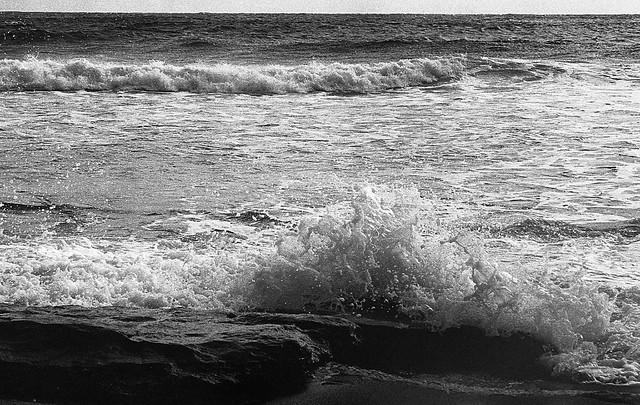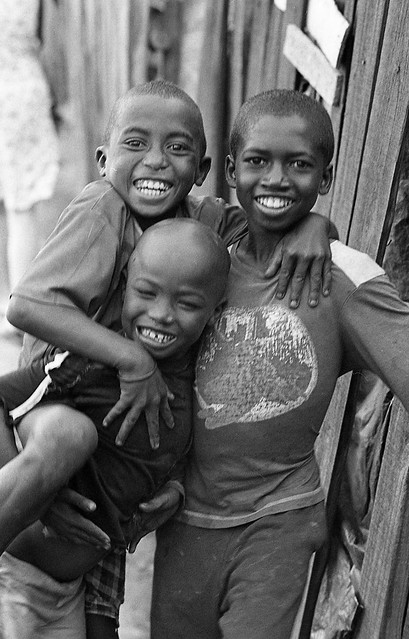I finally got around to trying something a photographer friend suggested a couple of years ago. At the time, I was new to film photography and not trying anything too fancy, beyond simply getting the 50, 60, 70-year-old cameras I was finding on eBay to take reasonable pictures (also no small feat). I had discovered the combination of Kodak Tri-X 400 film and the gritty streets and buildings of Chennai, India combined to produce interesting, grainy black-and-white photos. Elise suggested it might be fun to “push” the film, but at the time, I was using completely manual cameras and metering by “feel,” and trying to factor in underexposure and overdeveloping (or was it overexposure and underdeveloping?) was too much to handle at once.

Shoes are displayed for sale in an informal, roadside shop in Antananarivo, Madagascar
Since then, I’ve gotten more confident, and more importantly, bought fancier cameras that do some of the work for me (and discovered an iPhone light meter when that doesn’t work). Tri-X 400 is still my favorite film, and now I’ve acquired a Nikon F100 that has become my favorite camera. Combining the two seemed like a great opportunity to try pushing the Tri-X. And I’m happy with how things turned out!
In particular, I like how the breaking waves and ripples of the Indian Ocean turned out. I don’t normally think of the sea as a good black-and-white subject, but when we were visiting Reunion Island, that’s the film that happened to be in the camera. So that’s what you shoot.
I like the contrast and the grain. Though I think in some of the darker parts of the photos, it’s maybe too dark. I prefer solid, dark blacks, but these blacks feel like I’m losing some detail. This meat stall in Antananarivo, for example.
But in most of the shots, this is not an issue. I didn’t take that many shots of people, but I like how they turned out. Lots of greys, but still grain and dark blacks where they look good. The two shots below are also from Antananarivo.
The last two examples have a little bit of a story behind them. The photo below shows how many – probably the majority – of people in Antananarivo do their laundry. The lakes and canals have dirty water, but without other options, people can be seen (often on Sundays) doing the family’s wash. The clothes are spread out on rocks, bushes or grass to dry. And while my own shirts get bleached and washed in an automatic machine with the water set on hot, I find they are gradually turning gray. Yet the white clothing I see laying out to dry is often whiter than white, and spotless. We can’t figure it out.

Finally, the photo below really confused the vendor. I had been told that prisoners in Madagascar receive a daily ration of 300 grams of cassava. It turns out that’s incorrect – it’s actually around 700 grams – not a huge improvement, but different nonetheless. Anyway, I had been on the lookout for weeks for a cassava vendor with an old-timey scale, to capture what 300 grams looks like. Through hand gestures and bits of French, we managed to convey that we didn’t want to BUY the cassava, I only wanted to photograph the cassava. I ended up paying her what the cassava was worth (maybe a quarter dollar) to compensate her for her time. We wondered as we left what they were saying about us.








I so enjoy your posts sharing the enjoyment and excitement of photography – especially using such interesting equipment. Tri-X brings back a lot of smiles for me.
I enjoy the photos and the cassava part…
Always nice to see that someone is actually reading this stuff occasionally! By the way, if you like Tri-X, you may find this post interesting. In about 5 months. http://tazmpictures.com/site/?page_id=4504